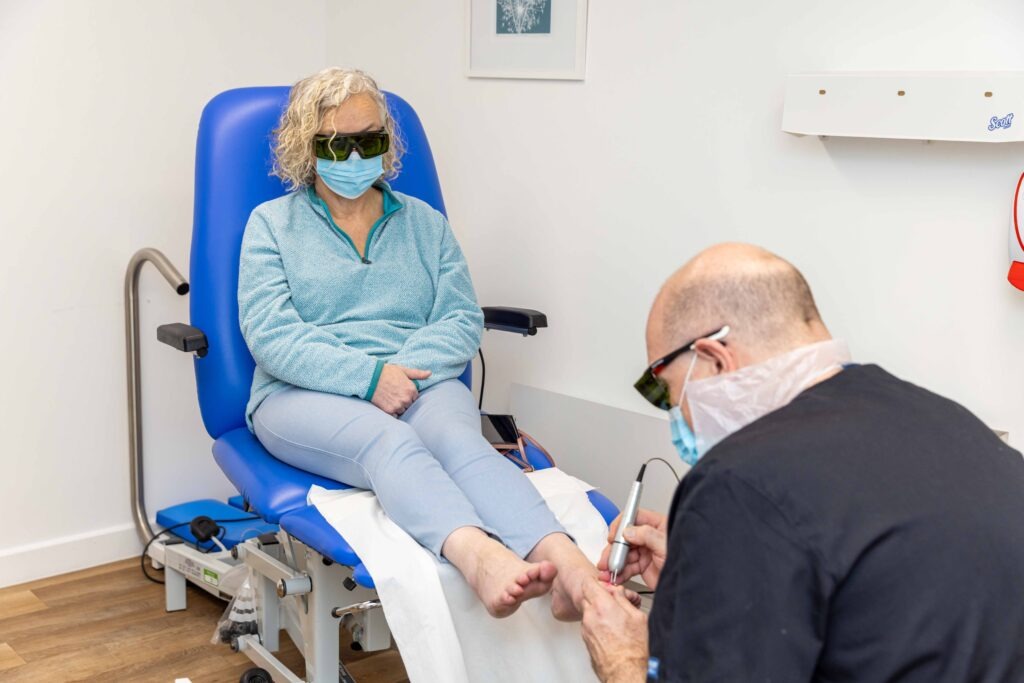
Fungal nail changes and discoloration can affect different parts of the nails or the entire thing. If left untreated it can cause the nail to separate from the nail bed, change color, cause brittleness and even make the nail thicker. If left for a long period of time, this can also cause a fungal skin infection also known as athletes foot. Treating fungal nails can be tricky but there are a variety of different treatment options that are available.
The fungus is in the skin under the nail, not in the nail itself, therefore simply painting the nail with lacquer is pointless and ineffective. Regular podiatry visits can help to reduce the thickness and abrade the nail to allow better penetration of a topical treatment.
As it can take a long time for antifungal medication to work, some people may prefer to use a treatment that involves softening and removing the infected nail over a few weeks.
Laser treatment is a possible option if you have a fungal nail infection that is not responding to other treatments. The laser emits high doses of light energy, which are used to destroy the fungus.
To treat fungal nail infections from inside the body, you can take tablets that inhibit the growth of fungi or kill them. Terbinafine is preferred if the nail fungus is caused by a skin fungus (dermatophyte).
These usually need to be taken once or twice a day for several months to ensure the infection has completely cleared up. If you stop taking the medication too early, the infection may return.
It is important that your doctor checks your progress at regular visits to make sure that this medicine is working properly. Blood tests may be needed to check for any unwanted effects.
Is considered a low risk procedure which involves partial or total nail removal. Following a complete assessment if you are suitable for this procedure you can be booked in for the surgery. Once removed anti-fungal agents are applied to the nail bed.
If you are in poor health, on certain medication, pregnant (in first trimester) or you have had a previous reaction to local anaesthetic, you will be referred to your GP.

Get in touch